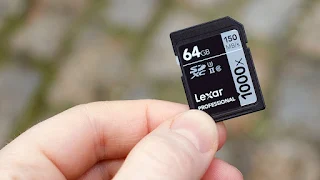Did you know that the first memory card, called the "CompactFlash," was introduced in 1994 by SanDisk? It had a storage capacity of just 128 MB, which was considered massive at the time! Today, memory cards can hold terabytes of data, making them essential tools for photographers, videographers, and anyone who needs to store large amounts of data in a portable and convenient way.
 |
| The End Of Memory Cards! |
Introduction
The Copycat Trend in Smartphone Industry
The smartphone industry has witnessed a trend where Android phone manufacturers often follow in the footsteps of Apple. From design to features, the Cupertino-based tech giant has set the benchmark that other companies strive to achieve. Recently, Apple announced that it would be removing the SIM card slot from its iPhones, and as expected, other companies are likely to follow suit. This move will inevitably spell the end of memory cards, which are often attached to the SIM card tray in most Android phones.
The End of Memory Cards
The Connection between SIM Cards and Memory Cards
For years, Android users have enjoyed the convenience of having a memory card slot on their phones. The feature allows them to expand their phone's storage capacity with ease. However, the impending removal of the SIM card slot by Apple means that the memory card slot, which is often attached to the SIM card tray, will no longer be available. The SIM card tray will be replaced by an eSIM, a digital version of a physical SIM card that is already present in some Android phones.
What is eSIM, and How Does it Work?
Understanding the New Technology
eSIM, also known as embedded SIM or virtual SIM, is a new technology that allows users to activate a mobile phone plan without the need for a physical SIM card. Instead, the phone has an electronic SIM embedded in it, which allows it to connect to a network. Users can add or switch carriers without physically changing the SIM card. While eSIM has been around for a while, it is yet to be widely adopted by most carriers.
The Pros and Cons of eSIM
Is eSIM the Future of Mobile Connectivity?
eSIM offers several advantages over physical SIM cards. For one, it saves space since it eliminates the need for a SIM card tray. Additionally, eSIM is more secure than a physical SIM card since it cannot be removed or tampered with. It also offers better user convenience since users can easily switch carriers without having to swap SIM cards. However, eSIM has its disadvantages. It is not widely adopted, and not all carriers support it. Moreover, it is not as easy to replace a physical SIM card since it is embedded in the phone.
Conclusion
The Future of Mobile Connectivity
In conclusion, the impending removal of the SIM card slot from iPhones will likely spell the end of memory cards in Android phones. The feature, which has been a staple in Android phones for years, will be replaced by eSIM, a new technology that offers several advantages over physical SIM cards. However, eSIM has its disadvantages and is yet to be widely adopted by most carriers. Only time will tell whether eSIM will be the future of mobile connectivity or if physical SIM cards will continue to reign supreme.


0 Comments
Please share your views.